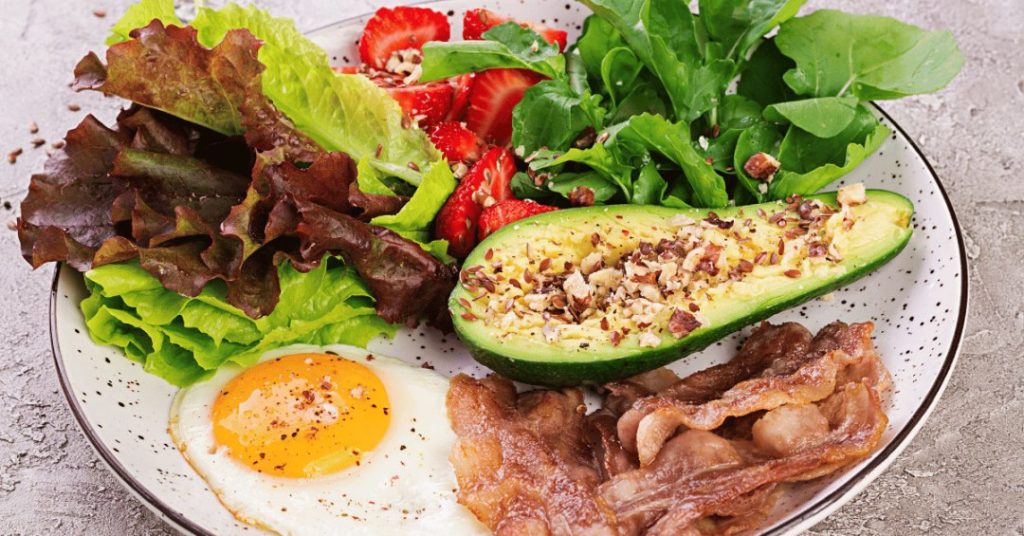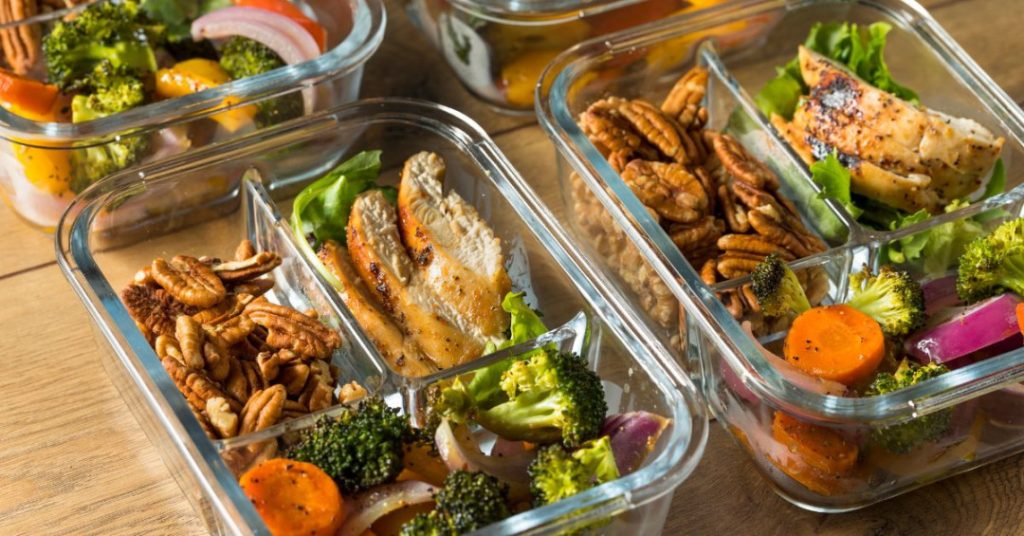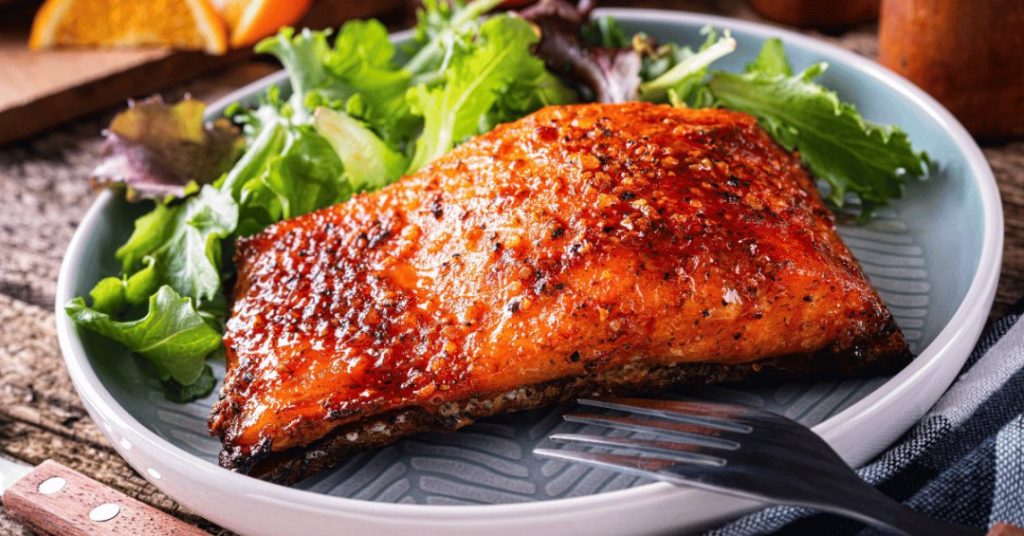Keto Diet Menu Plan: Keto Meal Plan 7-Day Menu & Shopping List
Some links on this page are affiliate links (including Amazon Associate links) which means that, if you choose to make a purchase, we may earn a small commission at no extra cost to you. We greatly appreciate your support!

Keto Diet Menu Plan: Keto Diet Meal Plan and Menu with Low Carb Shopping List
Embarking on a keto diet can feel overwhelming, but with the right menu plan, you’ll transform your body and energy levels in just one week. We’ll walk you through a foolproof, delicious low-carb diet menu that makes weight loss feel effortless. Prepare to unlock the metabolic magic of low-carb, high-fat eating!
Following a Keto Diet Plan: Science and Fundamentals

How Ketosis Triggers Rapid Fat Burning
The keto diet works by putting your body into a state called ketosis. This happens when you eat very few carbs and your body runs out of glucose (sugar) for energy. So instead, it starts burning fat for fuel—and that’s what helps you lose weight. Your body breaks down fat into something called ketones, and those become your new energy source.
This switch from carbs to fat-burning mode can help melt away body fat faster, especially around your belly. It also helps some people feel more full and less hungry, making it easier to stick to a healthy eating plan.
Macronutrient Breakdown for Optimal Results
To follow the keto diet correctly, it’s important to understand your macros—basically, how much fat, protein, and carbs you eat. The typical keto breakdown looks like this:
-
70–75% of your calories from fat
-
20–25% from protein
-
5–10% from carbs
This low amount of carbs (usually about 20–50 grams per day) helps your body stay in ketosis. Eating healthy fats like avocados, nuts, olive oil, and fatty fish gives you energy, while moderate protein supports your muscles. Keeping carbs low is key—too many and your body might stop burning fat.
Common Misconceptions About the Ketogenic Diet
There are a few myths floating around about keto. Some people think it’s just bacon and cheese all day long, but that’s not true. A healthy keto diet includes lots of vegetables, high-quality fats, and clean proteins.
Another myth is that keto is just a quick-fix diet. While weight loss can happen quickly at first, keto works best as a long-term lifestyle change. Some also worry that all the fat is bad for your heart—but when you choose healthy fats, keto can actually support heart health.
Health Benefits of the Keto Diet Beyond Weight Loss
While many people try keto to shed pounds, the benefits don’t stop there. Keto may help balance blood sugar, which can be great for people with type 2 diabetes or insulin resistance. It may also improve mental focus, reduce inflammation, and support better energy levels throughout the day.
Some people even report fewer cravings, better sleep, and clearer skin. Because you’re cutting out processed foods and sugar, your body gets a bit of a reset—which can lead to feeling better all over.
Potential Side Effects and How to Mitigate Them
At the beginning of trying the keto diet, some people experience what’s called the “keto flu.” This can include headaches, tiredness, irritability, and muscle cramps—usually in the first few days as your body adjusts to fewer carbs.
To ease these symptoms, drink plenty of water, get enough salt (sodium), and make sure you’re getting potassium and magnesium from foods like leafy greens, avocado, and nuts. Some people also take electrolyte supplements to help.
Other mild side effects may include constipation or bad breath, but these are usually temporary and go away as your body adapts.
Summary
The keto diet helps your body burn fat fast by putting it into a state called ketosis, where it uses fat instead of carbs for energy. By eating mostly healthy fats, some protein, and very few carbs, your body turns fat into fuel and may help reduce hunger. This switch can lead to quick weight loss, better energy, and other health benefits.
Click Here For Our Full List Of The Best Apps For Counting Macros
Keto Meal Plan: Daily Macros and Calorie Breakdown
Precise Macronutrient Calculations
On keto, you focus on three main macronutrients: fat, protein, and carbohydrates. A typical keto plan follows this rule:
-
70–75% fat
-
20–25% protein
-
5–10% carbs
This means if you’re eating 1,500 calories a day:
-
Fat: ~115 grams
-
Protein: ~75 grams
-
Carbs: ~25 grams (net, not total)
By sticking to these targets, your body enters a state called “ketosis,” where it burns fat for fuel instead of carbs. These macros help your body shift into fat-burning mode and stay full longer, making it easier to stick to your plan.
Calorie Ranges for Different Weight Loss Goals
Everyone needs a different amount of calories depending on age, weight, activity level, and goals. For weight loss, most people aim for:
-
1,200–1,400 calories/day (for gentle weight loss)
-
1,400–1,600 calories/day (for moderate, steady weight loss)
-
1,600–1,800 calories/day (for active individuals)
Cutting too many calories can slow your metabolism, so it’s best to start with a mild deficit (around 300–500 calories below your maintenance needs). Use an online calculator to estimate your daily calorie needs and adjust weekly based on your results.
Portion Control Strategies
Even on keto, portion size matters. It’s easy to eat too much cheese, nuts, or oil—even healthy fats have calories. Try using these strategies:
-
Measure ingredients with a scale or measuring cups
-
Use smaller plates to naturally eat less
-
Fill half your plate with non-starchy veggies (like spinach or zucchini)
-
Limit snacks, even keto-friendly ones
Keeping portions in check helps you control calories without counting every bite.
Calculating Net Carbs vs. Total Carbs
Keto focuses on “net carbs,” not total carbs. Here’s how to figure those out:
Net Carbs = Total Carbs – Fiber – Sugar Alcohols (like erythritol or xylitol)
Fiber and sugar alcohols don’t spike your blood sugar, so we subtract them. For example, if a snack has:
-
15g total carbs
-
7g fiber
-
2g sugar alcohols
You’d track 6g of net carbs.
Most keto eaters stick to 20–30 grams of net carbs per day. Reading labels or using a tracking app can help simplify this.
Personalization Guidelines for Individual Metabolism
No two bodies are the same. Your metabolism, activity level, hormones, and health history all affect how you should eat on keto. Here’s how to fine-tune the plan:
-
If you feel low-energy, increase fats slightly
-
If you’re losing muscle, increase protein a bit
-
If weight loss stalls, double-check net carbs and total calories
-
Women, especially, may need more patience and slower calorie adjustments due to hormone shifts
Track how your body feels and responds. Weekly check-ins, a food journal, or using apps like Carb Manager or MyFitnessPal can help you stay on track and learn what works for your body.
Summary
Understanding your daily keto macros and calories is key to reaching your weight loss goals on the ketogenic diet. While keto focuses on low carbs and high fats, it’s not a one-size-fits-all plan. Let’s break down how to track your macros, adjust your calories, and tailor your meals to fit your goals—all in a simple and easy-to-follow way.
7-Day Keto Diet Menu Plan: Meals and Recipes
Keto Breakfast Options (Under 10g Net Carbs)

Starting your morning with a low-carb, high-fat breakfast helps fuel your body and keep cravings away until lunch. Here are two easy options you’ll love.
Cheesy Spinach Egg Muffins
These are meal-prep friendly and made in a muffin tin for grab-and-go convenience.
Ingredients (Makes 6 muffins / 3 servings):
-
6 large eggs
-
1/2 cup spinach, chopped
-
1/2 cup shredded cheddar cheese
-
1/4 cup heavy cream
-
1/4 tsp garlic powder
-
Salt and pepper to taste
Instructions:
-
Preheat oven to 375°F (190°C).
-
Whisk eggs, cream, garlic, salt, and pepper in a bowl.
-
Fold in chopped spinach and cheese.
-
Pour evenly into a greased 6-cup muffin tin.
-
Bake for 18–20 minutes until set.
Nutritional Info (Per Serving):
-
Calories: 220
-
Net Carbs: 3g
-
Fat: 17g
-
Protein: 12g
Taste & Benefits:
Mildly cheesy with a fluffy texture, these egg muffins keep you full and focused all morning while staying under 4g net carbs per serving.
Keto Yogurt Bowl
Ingredients (1 serving):
-
1/2 cup unsweetened coconut milk yogurt
-
1 tbsp chia seeds
-
1 tbsp peanut butter (no sugar added)
-
A few raspberries (optional, 3–4 max)
-
Sprinkle of cinnamon
Instructions:
-
Scoop yogurt into a bowl.
-
Add chia seeds and swirl in peanut butter.
-
Top with raspberries and dust with cinnamon.
Nutritional Info:
-
Calories: 250
-
Net Carbs: 6g
-
Fat: 20g
-
Protein: 6g
Taste & Benefits:
Creamy and a little fruity, this combo hits the sweet spot without spiking your blood sugar. Great for plant-based eaters too!
Keto Lunch Recipes with High Satiety

Midday meals on keto should be satisfying without making you sluggish. These lunch recipes are packed with healthy fats and protein to keep you energized between meals.
Chicken Cobb Salad with Avocado Ranch
Ingredients (1 serving):
-
1 cup romaine lettuce, chopped
-
1/2 avocado, sliced
-
1 hard-boiled egg, chopped
-
1 grilled chicken thigh, diced
-
2 slices bacon, crumbled
-
2 tbsp avocado ranch dressing (sugar-free)
Instructions:
-
Layer all ingredients in a large bowl.
-
Drizzle with dressing and toss gently to combine.
Nutritional Info:
-
Calories: 430
-
Net Carbs: 5g
-
Fat: 32g
-
Protein: 25g
Taste & Benefits:
Creamy, crunchy, and loaded with flavor, this salad leaves you truly full thanks to the fat and protein. No afternoon snacking needed!
Tuna Zucchini Boats
Ingredients (Serves 2):
-
2 medium zucchinis, halved lengthwise
-
1 can tuna in olive oil, drained
-
1/4 cup mayo
-
1 tbsp Dijon mustard
-
2 tbsp chopped pickles
-
Salt and pepper
Instructions:
-
Scoop out the center of each zucchini half.
-
Mix tuna, mayo, mustard, pickles, salt, and pepper in a bowl.
-
Spoon tuna mixture into zucchini halves. Optional: Broil for 3–5 mins for extra texture.
Nutritional Info (Per Serving):
-
Calories: 310
-
Net Carbs: 4g
-
Fat: 24g
-
Protein: 18g
Taste & Benefits:
Tangy and satisfying, these boats are low in carbs but high in crunch and protein. Perfect when you want fast and filling.
Keto Dinner Meals That Support Ketosis

Dinner can feel like the hardest meal to keep low-carb, but with the right ingredients, it’s super doable—and delicious. These meals help your body stay in fat-burning mode overnight.
Garlic Butter Salmon with Cauliflower Mash
Ingredients (Serves 2):
-
2 salmon filets (6 oz each)
-
2 tbsp butter
-
2 cloves garlic, minced
-
Juice of ½ lemon
-
2 cups cauliflower florets
-
1 tbsp cream cheese
-
Salt and pepper
Instructions:
-
Steam cauliflower until soft, then mash with cream cheese, salt, and pepper.
-
In a pan, melt butter and sauté garlic until fragrant.
-
Cook salmon skin-side down 3–4 mins, flip and cook another 2–3 mins.
-
Drizzle lemon butter over salmon and serve with mash.
Nutritional Info (Per Serving):
-
Calories: 520
-
Net Carbs: 6g
-
Fat: 35g
-
Protein: 38g
Taste & Benefits:
Rich and buttery with a squeeze of citrus, this meal satisfies like comfort food but keeps you right on track with your macros.
Cauliflower Crust Keto Pizza
Ingredients (Serves 2):
-
1 cup grated cauliflower (patted dry)
-
1 egg
-
1/2 cup shredded mozzarella
-
1 tsp Italian herbs
-
1/3 cup sugar-free marinara
-
1/2 cup shredded mozzarella (topping)
-
Pepperoni or veggies of choice
Instructions:
-
Preheat oven to 400°F. Mix crust ingredients and press into a circle on parchment paper.
-
Bake for 12 minutes until golden.
-
Add sauce, cheese, toppings. Bake another 8–10 minutes.
Nutritional Info (Per Serving):
-
Calories: 390
-
Net Carbs: 6g
-
Fat: 28g
-
Protein: 22g
Taste & Benefits:
Crispy edges and cheesy goodness make this low-carb pizza a total win for weeknight cravings.
Snack Ideas: Foods to Eat for Hunger Management
Snacks on keto should satisfy without knocking you out of ketosis. Here are smart go-to options under 5g net carbs per serving:
-
Beef Jerky (No Sugar Added): Easy protein boost on-the-go.
-
Hard-Boiled Eggs with Salt & Paprika: Simple and super filling.
-
Avocado Slices with Everything Bagel Seasoning: Creamy and savory.
-
Celery with Almond Butter: Crunchy and satisfying.
-
Cheese Crisps: Crunchy, salty, and full of fat—great for cravings.
Each of these is quick to prep or ready in seconds, keeping you full and focused without messing with your macros.
Weekend Meal Prep Strategies for a Low Carb Diet Meal Plan
Taking time on the weekend to prep can make your weekday meals stress-free and consistent with your weight loss goals. Try these strategies:
-
Batch Cook Proteins: Grill chicken, hard-boil eggs, or bake salmon for easy grab-and-go meals.
-
Portion Snacks: Pre-pack nuts, cheese, or jerky into single-serving containers.
-
Freeze Breakfasts: Make a batch of egg muffins or keto pancakes and freeze for the week.
-
Chop Veggies Ahead: Pre-chop cauliflower, peppers, and zucchini to save prep time on busy nights.
-
Double Your Dinners: Cook double portions and enjoy leftovers for lunch the next day.
With everything ready to go, you’re less likely to reach for off-plan foods or skip meals.
Vegetarian and Vegan Keto Dairy-Free Adaptations
Keto isn’t just for heavy meat and cheese lovers—there are easy swaps for plant-based or dairy-free folks too.
Vegetarian Swaps:
-
Use tofu, tempeh, seitan, eggs, or cheese for protein.
-
Replace meat in recipes like Cobb salad with grilled tofu or boiled eggs.
-
Load up on low-carb veggies like spinach, mushrooms, and bell peppers.
Dairy-Free Ideas:
-
Swap cow’s milk yogurt for coconut milk yogurt.
-
Trade cream cheese for mashed avocado or dairy-free cream cheese.
-
Use olive oil instead of butter for sautéing.
With a few easy changes, you can enjoy a fully keto, plant-friendly menu that still keeps your carbs low and your taste buds happy.
Summary
Eating low-carb doesn’t mean boring or confusing meals. This 7-day menu is made to keep your meals simple, tasty, and effective for weight loss. Whether you’re looking for quick breakfast ideas, filling lunches, or keto-friendly dinners, we’ve got you covered. These recipes help you stay in ketosis, reduce cravings, and hit your goals.
Keto-Friendly Shopping List and Diet Food List

Recommended Proteins
Protein is a big part of the keto diet. It helps repair body tissue, curbs hunger, and keeps your metabolism working.
-
Meat: Choose fatty cuts of beef, pork, and lamb. Think ground beef (80/20), chuck roast, pork belly, or ribs.
-
Poultry: Go for chicken thighs, wings, and drumsticks with skin. Turkey and duck are great too.
-
Seafood: Salmon, sardines, tuna, and mackerel are high in healthy fats. Shellfish like shrimp and scallops also work well.
-
Eggs: Whole eggs are a keto staple—scrambled, boiled, or fried in butter.
-
Deli meats: Unprocessed options like roast beef, turkey, or salami (watch for hidden sugars).
These protein-rich foods keep you full and fuel your body without loading up on carbs. Stock up on a variety of fresh, frozen, or vacuum-sealed meats for quick meals.
Low-Carb Vegetables
Keto vegetables are high in fiber and nutrients but low in carbs. They’re perfect for weight loss and digestion.
-
Leafy greens: Spinach, kale, romaine, arugula, and Swiss chard.
-
Cruciferous veggies: Broccoli, cauliflower, cabbage, and Brussels sprouts.
-
Other picks: Zucchini, bell peppers, asparagus, mushrooms, cucumber, and celery.
Focus on non-starchy veggies that grow above the ground. These add flavor, color, and crunch to your meals without kicking you out of ketosis.
Healthy Fat Sources
Fats are the fuel in your keto engine. They keep you satisfied and help your body burn stored fat for energy.
-
Oils: Olive oil, coconut oil, avocado oil, and MCT oil.
-
Butter & ghee: Ideal for cooking or drizzling over veggies.
-
Avocados: Loaded with heart-healthy fats and fiber.
-
Olives and nuts: Stick to almonds, macadamias, pecans, and walnuts (avoid cashews, which are higher in carbs).
-
Seeds: Chia, flax, pumpkin, and sunflower seeds are great for snacks or adding texture.
Healthy fats not only make meals taste better but also keep you full longer. Choose unprocessed sources and avoid trans fats or processed seed oils.
Approved Dairy and Alternatives
Dairy can be part of a keto diet if you pick low-carb, high-fat kinds. Watch for added sugars in flavored or low-fat versions.
-
Cheese: Cheddar, mozzarella, goat cheese, cream cheese, and parmesan.
-
Yogurt: Plain, full-fat Greek yogurt or unsweetened coconut milk yogurt.
-
Cream: Heavy whipping cream for coffee or sauces.
-
Milk alternatives: Unsweetened almond, macadamia, or coconut milk.
Choose full-fat, unsweetened dairy to stay in ketosis. Dairy alternatives can expand your options and are perfect for people with sensitivities.
Pantry Staples for Keto Success
Having a stocked pantry makes it easier to stick to your keto goals without reaching for unhealthy snacks.
-
Baking basics: Almond flour, coconut flour, and unsweetened cocoa powder.
-
Sweeteners: Stevia, erythritol, monk fruit, or allulose.
-
Broth & bouillon: Great for soups and replenishing electrolytes.
-
Keto snacks: Pork rinds, seaweed snacks, nut butters (no added sugar), and dark chocolate (85%+).
-
Spices & sauces: Mustard, mayo, hot sauce, herbs, and spices (watch the carb counts!).
Your keto pantry should work for you—not against you. Load up on versatile, long-lasting items that let you whip up quick and satisfying meals.
Budget-Friendly Shopping Tips
Keto can be affordable when you shop smart. Eating low-carb doesn’t mean spending more.
-
Go frozen: Frozen meats and veggies are often cheaper and last longer.
-
Buy in bulk: Look for family packs of meat or big bags of cheese and portion them out.
-
Pick store brands: They usually cost less and offer the same quality.
-
Plan and prep: Stick to a meal plan to avoid impulse buys and food waste.
-
Look for discounts: Buy cheeses and meats that are on sale and freeze extras.
A well-planned keto shopping list can save money while keeping your weight loss goals on track. It’s all about knowing where to look and buying what you’ll actually use.
Meal Prep Containers and Tools
A few handy tools make meal prep faster and more organized, especially when you’re busy.
-
Food storage containers: Look for BPA-free, airtight containers in a variety of sizes.
-
Meal prep boxes: Use sectioned containers to control portions.
-
Freezer bags: Great for storing pre-cooked proteins and veggies.
-
Digital food scale: Measure food portions and track macros accurately.
-
Slow cooker or Instant Pot: Perfect for easy batch meals like soups and roasts.
-
Blender or immersion blender: For smoothies, shakes, and sauces.
Having the right tools prevents last-minute temptations and helps you stay consistent throughout the week. Preparing meals ahead of time makes eating keto a breeze.
Summary
Starting a keto diet for weight loss doesn’t have to be overwhelming. This section will help you fill your fridge, freezer, and pantry with foods that keep you full, support fat burning, and make meal prep much easier. From proteins to veggies and even keto-approved snacks, this is your complete beginner-friendly guide to building a keto-friendly kitchen.
Supplementation and Advanced Ketogenic Meal Plan Strategies
Essential Supplements for Keto Dieters
Starting a keto diet can sometimes leave your body low on certain nutrients, especially in the beginning. Taking the right supplements can help with energy, muscle function, and even help avoid the dreaded “keto flu.”
Helpful keto supplements include:
-
Electrolytes (especially magnesium, potassium, and sodium) – These help prevent muscle cramps, headaches, and fatigue.
-
Omega-3 fatty acids – Great for heart health and reducing inflammation.
-
MCT oil – A quick-burning fat that boosts energy and supports ketone production.
-
Vitamin D – Supports mood and immune health, especially if you’re low from spending time indoors.
-
Digestive enzymes – Can help break down fats and make digestion easier.
Adding these supplements can keep your body balanced and help you feel better as you adjust to burning fat for fuel.
Intermittent Fasting Integration
Intermittent fasting (IF) pairs really well with keto because both rely on burning stored body fat for energy. IF simply means you eat during a set period of time each day — like 8 hours of eating and 16 hours of fasting.
Popular IF schedules:
-
16:8 – You fast for 16 hours (including sleep) and eat all your meals in an 8-hour window.
-
18:6 or 20:4 – These are more advanced versions that can give even more weight loss benefits.
Using IF with keto can speed up weight loss, stabilize blood sugar, and push your body into deeper fat-burning mode. Just be sure to stay hydrated and start slowly if you’re new to fasting.
Exercise Recommendations
Exercise helps you burn calories, build muscle, and feel confident in your keto journey. The great news is that you don’t have to do hours of cardio to see benefits — keto works well with many types of movement.
Try mixing these activities into your week:
-
Low-intensity cardio (like walking, biking, or swimming) – Great for fat-burning without stressing your body.
-
Strength training (like using weights or resistance bands) – Helps maintain muscle and keep your metabolism fired up.
-
High-Intensity Interval Training (HIIT) – Short bursts of intense exercise can burn calories and boost ketones fast.
If you’re just starting, aim for 20–30 minutes a few days a week, and slowly increase as your energy improves.
Blood Ketone Monitoring
Want to know if you’re truly in ketosis? Checking your ketone levels can help! There are several ways to measure it:
-
Urine strips (best for beginners, though they get less accurate over time)
-
Breath testers (convenient and reusable)
-
Blood ketone meters (most accurate, works like a blood sugar test)
Knowing your ketone levels can help you spot when you’re in fat-burning mode, adjust your food or fasting routine, and stay on track for weight loss. Many people feel more motivated when they see their ketone numbers rise!
Long-Term Sustainability Techniques
The keto diet can be powerful, but to make it last, you’ll need smart habits and a flexible mindset. These tips can make keto easier to stick with for months or even years:
-
Meal prep each week – Planning ahead avoids temptations and keeps your meals keto-friendly.
-
Have keto swaps on hand – Like almond flour instead of regular flour, or monk fruit instead of sugar.
-
Build in “planned flexibility” – Allow room for higher-carb meals on special occasions, then return to keto afterward.
-
Track your progress – Use apps or journals to see what works for your body.
When keto becomes part of your daily routine (not a strict diet), it becomes much easier to keep going and enjoy the benefits long term.
Metabolism Optimization Tips
Your metabolism is how your body burns calories — and the keto diet can give it a big boost! But there are also a few tricks to help it work even better:
-
Get enough sleep – Lack of sleep can slow metabolism and increase cravings.
-
Drink water throughout the day – Staying hydrated helps your body burn fat more efficiently.
-
Eat protein with every meal – Protein supports muscle, which burns more calories at rest.
-
Don’t skip meals all the time – Sometimes eating too little can slow things down. Balance is key!
With a few smart daily habits, you can make sure your metabolism stays strong and supports your weight loss goals effectively.
Summary
When you’re following a keto diet, your body goes through big changes — and that can feel a little overwhelming at first. Luckily, there are some smart strategies and tools that can help you feel your best while losing weight. Supplements, intermittent fasting, exercise, and more.. can help make your keto journey smoother, faster, and easier to stick with.
Conclusion
Your keto journey starts now! This menu plan isn’t just a diet – it’s a comprehensive lifestyle transformation. By following these strategically designed meals and tips, you’re not just losing weight, but reprogramming your metabolism for long-term success. Take the first step, stay consistent, and watch your body transform!





